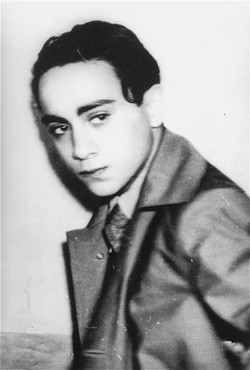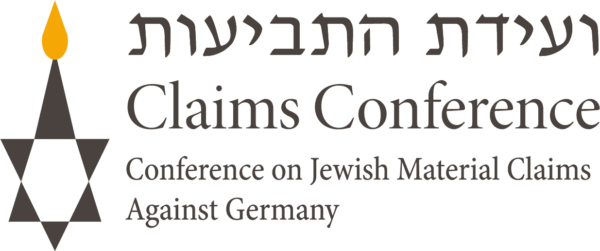Kristallnacht, often referred to as the Night of Broken Glass, stands as a harrowing chapter in history and serves as a violent turning point during the early stages of the Holocaust. Nazi officials deceptively portrayed these acts as spontaneous reactions by the German populace, disguising the organized and state-sanctioned nature of the violence. But the truth was that the safety of Jews had already been under siege. Four months before Kristallnacht, in July 1938, representatives from 32 nations gathered at the Évian Conference to address the issue of Jewish immigration. Despite the urgency of the refugee crisis, most countries, except for the Dominican Republic, refused to accept Jewish refugees. This stark international indifference signaled to Hitler and the Nazi Party that the world was unwilling to provide refuge for the world’s Jews.
Shortly after this diplomatic blow, 17,000 Polish Jews were violently expelled across the German/Polish border on October 28, 1938. Among those forcibly removed were the family of 17-year-old Herschel Grynszpan, who, in the wake of the expulsion, fatally shot German diplomat Ernst vom Rath in Paris; the event acted as a catalyst for the Nazis, who were already contemplating an escalation in their persecution of the Jewish population.

Portrait of Herschel Grynszpan taken after his arrest by French authorities for the assassination of German diplomat Ernst vom Rath. Grynszpan (1921-1943?). Born in Hannover, Germany, was the son of Polish Jews who had immigrated to Germany. In 1936 Grynszpan fled to Paris. On November 7, 1938, after having learned of the expulsion of his parents from Germany to Zbaszyn the Polish frontier, Grynszpan assassinated Ernst vom Rath, the third secretary of the German embassy in Paris. The diplomat’s subsequent death two days later was used by the Nazi regime as justification for unleashing the Kristallnacht pogrom of November 9–10. In 1940 Grynszpan was turned over to the Germans by the Vichy government, but the date and place of his death have never been clarified. Photograph taken in Paris, France, November 7, 1938.
Photo: United States Holocaust Memorial Museum, courtesy of Morris Rosen
The Nazi government seized upon the assassination as a pretext for unleashing violence against Jews in what would become known as Kristallnacht. On the evening of November 9, 1938, Propaganda Minister Joseph Goebbels said, in a now notorious speech, that “the Führer has decided that … demonstrations should not be prepared or organized by the Party, but insofar as they erupt spontaneously, they are not to be hampered.” This statement, interpreted as a command to organize a pogrom, gave the green light for widespread violence, destruction, and terror against Jews.
Baden Baden, Germany – arrest of Jews by the SS on Kristallnacht
Photo: Yad Vashem
On the night of November 9-10, 1938, Nazis, paramilitary groups, and Hitler Youth orchestrated a series of pogroms, unleashing terror upon Jewish communities, businesses, synagogues, and homes throughout Germany, Austria and the Sudetenland. Particularly intense in Berlin and Vienna, the pogroms involved mobs of Hitler Youth, also known as Storm Troopers, who attacked Jews in their homes and coerced public acts of humiliation. Smoke filled the air from burning synagogues and Jewish cemeteries were desecrated. Shattered glass from vandalized Jewish-owned establishments littered the streets, prompting the name “Night of Broken Glass.”
November 9/10, 1938, A synagogue in flames in Siegen, Germany, during Kristallnacht
Yad Vashem Photo Archives 136BO9
Though Kristallnacht was not explicitly government-directed, it was still the result of years of dramatically increasing antisemitism. During the pogrom, approximately 30,000 Jewish men were forcefully rounded up and sent to concentration camps, marking the first instance of mass arrests of Jews solely based on religion. In the aftermath of Kristallnacht, the Nazi regime escalated its persecution of Jews, imposing a staggering one billion Reichsmark “atonement tax” on the Jewish community (400 million US dollars at 1938 rates).
A woman who is concealing her face sits on a park bench marked “Only for Jews.” Austria, ca. March 1938. Photo USHMM/Institute of Contemporary History and Wiener Library Limited
The event also triggered the rapid enactment of numerous anti-Jewish laws. Jews were prohibited from public educational institutions, cinemas, theaters, and sports. Laws such as the Exclusion of Jews from German Economic Life (November 1938) further restricted Jewish participation in the economy by seizing Jewish-owned businesses and imposing fines on Jewish individuals. In many cities, Nazis established areas designated as “Aryan” and prohibited Jews from entering. As the Nazi leaders accelerated preparations for European conquest, the events of Kristallnacht marked a pivotal escalation of antisemitic violence under the Nazi regime.
↑top
All content ⒸConference on Jewish Material Claims Against Germany (Claims Conference)
